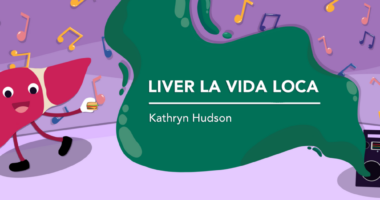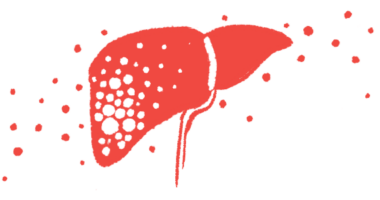Researchers identify pathway behind MASLD-linked mutation
Study paves way for targeted liver fat-reducing treatments

A study showed that a genetic mutation associated with metabolic dysfunction-associated steatotic liver disease (MASLD), a form of fatty liver disease, results in an abnormal buildup of fat inside lab-grown human liver cells, a discovery that could help researchers target treatments to reduce fat accumulation.
The Src, PI3K, and Akt signaling pathway was found to be involved in fat accumulation, with medications targeting this pathway reducing fat levels in human liver cells by up to 80%, with no signs of toxicity.
The study showed that “human … liver cells with MASLD mutations can be used effectively to identify pathways that can be targeted by drugs to reduce fat levels in the liver,” Stephen Duncan, PhD, the study’s senior author and SmartState endowed chair in regenerative medicine at the Medical University of South Carolina, said in a university news story.
Details of the discovery were published in the International Journal of Molecular Sciences, in the study “A PNPLA3-Deficient iPSC-Derived Hepatocyte Screen Identifies Pathways to Potentially Reduce Steatosis in Metabolic Dysfunction-Associated Fatty Liver Disease.”
MASLD, formerly known as nonalcoholic fatty liver disease, is a common disease marked by the abnormal buildup of fat in the liver, or steatosis. It is linked to metabolic conditions including obesity, type 2 diabetes, and abnormal levels of fatty molecules in the blood. In some cases, MASLD can progress to metabolic dysfunction-associated steatohepatitis, or MASH, which is characterized by liver inflammation and scarring (fibrosis). Without strategies to reduce or prevent further fat accumulation, the condition can lead to serious long-term liver damage and liver cancer.
Diet, exercise
Current MASLD treatment consists of changes in diet and physical activity. The first medication for any form of fatty liver disease was approved in the U.S. earlier this year. Rezdiffra (resmetirom) was approved to treat MASH.
The I148M mutation in the PNPLA3 gene that encodes for an enzyme of the same name is a major risk factor of MASLD. PNPLA3 is located at the surface of liver cells’ lipid droplets, or cellular organelles that are rich in fatty molecules and involved in energy and fatty molecule balance. The I148M mutation leads to an accumulation of the enzyme on lipid droplets of liver cells.
Still, the molecular mechanisms underlying the role of the I148M variant in MASLD and its progression remain poorly understood.
“A lot of patients with fatty liver have this mutation, and we don’t know what it’s doing or why it’s increasing susceptibility to fatty liver,” said Caren Doueiry, MD, the study’s first author and a PhD student in Duncan’s lab.
Most studies of this mutation have been done in mice, in which a shorter PNPLA3 is produced, and is mostly found on fatty tissue instead of the liver.
The lack of a human cell model that recapitulates PNPLA3-I148M mutation-mediated effects has impaired the development of potential treatments for PNPLA3-related MASLD.
Targeting medications
With this in mind, Duncan’s team developed and analyzed lab-grown human liver cells carrying the PNPLA3-I148M mutation or lacking the PNPLA3 gene altogether. These cells were derived from stem cells and genetically modified with a gene-editing tool called CRISPR-Cas9.
They found that in both types of mutated cells, the number of lipid droplets was 10 times higher than in healthy liver cells, and the droplets were twice as big.
“I knew that the mutation in humans was causing the fat accumulation, but I had no idea what I was going to see in the plate,” Doueiry said. “Looking at the liver cells carrying the genetic mutation for the first time was so exciting because I knew we had a model that we can use to find some answers.”
To seek potential medicines for MASLD, the team then screened a library of 1,100 compounds with known mechanisms of action in these lab-grown mutated liver cells.
Five compounds were found to reduce the number of lipid droplets by more than 50%. In addition, each compound effectively reduced lipid droplet accumulation at doses that didn’t impact cell survival.
Using a computer-based analysis to predict pathways affected by these five compounds, the team discovered that they all interacted with three proteins in the same signaling pathway: Src, PI3K, and Akt. This pathway is known to regulate cell growth and is commonly targeted by cancer therapies to stop tumor development.
“With these results, we knew we weren’t just looking at random molecules doing something,” Doueiry said. “The fact that they all connected through a pathway showed us that we were onto something.”
Building on these results, the researchers tested the impact of five medications targeting any of these proteins on lab-grown liver cells lacking PNPLA3. These drugs are either already approved or in development for certain types of cancer.
All of the medications markedly reduced lipid droplet accumulation in mutated liver cells. Treatment at high concentrations reduced cell survival; at low concentrations, they effectively reduced lipid droplet levels by 50%-80%, with no effect on cell survival.
“While our study identifies the Src/PI3K/Akt pathway involvement in PNPLA3-related [fat] accumulation, further studies are needed to understand how the pathway contributes to [fat] accumulation with the loss of function of PNPLA3,” the researchers concluded.







